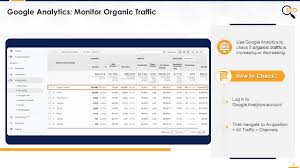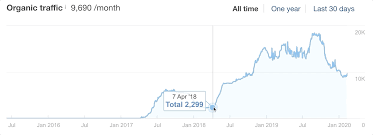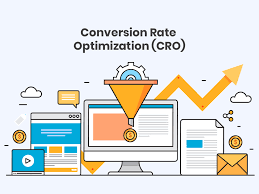Unlocking Success: The Impact of SEO Marketing in the Digital World
The Power of SEO Marketing in the Digital Age
In today’s digital landscape, having a strong online presence is crucial for businesses to succeed. Search Engine Optimisation (SEO) marketing plays a pivotal role in helping businesses improve their visibility and reach their target audience effectively.
What is SEO Marketing?
SEO marketing involves optimising a website’s content, structure, and other elements to rank higher in search engine results pages (SERPs). By implementing SEO strategies, businesses can increase organic traffic to their websites and enhance their online visibility.
The Benefits of SEO Marketing
One of the key benefits of SEO marketing is that it helps businesses attract high-quality traffic that is more likely to convert into customers. By targeting relevant keywords and optimising website content, businesses can connect with users who are actively searching for products or services they offer.
Furthermore, SEO marketing is a cost-effective strategy compared to traditional advertising methods. By investing in SEO, businesses can achieve long-term results and establish a strong online presence without breaking the bank.
Key Elements of Successful SEO Marketing
Successful SEO marketing involves various elements, including keyword research, on-page optimisation, link building, and technical SEO. By focusing on these key areas and staying up-to-date with search engine algorithms, businesses can improve their search engine rankings and drive more organic traffic to their websites.
The Future of SEO Marketing
As search engines continue to evolve and user behaviour changes, the field of SEO marketing will also adapt to meet new challenges and opportunities. Businesses that invest in staying ahead of the curve with innovative SEO strategies will be well-positioned to succeed in the competitive digital landscape.
Conclusion
In conclusion, SEO marketing is an essential component of any successful digital marketing strategy. By harnessing the power of SEO, businesses can enhance their online visibility, attract quality traffic, and achieve sustainable growth in the digital age.
Six Advantages of SEO in Digital Marketing: Boosting Visibility, Engagement, and Cost-Effectiveness
- Increased online visibility
- Targeted audience reach
- Cost-effective compared to traditional advertising methods
- Enhanced website traffic and user engagement
- Long-term sustainable results
- Ability to track and measure performance with analytics
Challenges of SEO in Digital Marketing: Patience, Costs, and Risks
- SEO results may take time to show, requiring patience and ongoing effort.
- Algorithm changes by search engines can impact SEO strategies and rankings.
- Competitive keywords can be difficult to rank for, especially in saturated markets.
- SEO requires continuous monitoring and adjustments to maintain effectiveness.
- Quality SEO services can be costly, especially for small businesses with limited budgets.
- Black hat SEO techniques can lead to penalties from search engines, harming website visibility.
Increased online visibility
Increased online visibility is a key benefit of SEO marketing in the digital realm. By implementing effective SEO strategies, businesses can enhance their presence on search engine results pages, making it easier for potential customers to discover their products or services online. Improved online visibility not only drives more organic traffic to websites but also helps establish brand credibility and trust among users searching for relevant information. In a competitive digital landscape, the ability to boost online visibility through SEO marketing can significantly impact a business’s success and growth.
Targeted audience reach
One significant advantage of SEO marketing in the digital realm is its ability to facilitate targeted audience reach. By strategically incorporating relevant keywords and optimising content, businesses can effectively connect with their desired audience who are actively searching for products or services they offer. This targeted approach not only increases the likelihood of engaging with potential customers but also enhances the overall conversion rates, resulting in a more efficient and cost-effective marketing strategy.
Cost-effective compared to traditional advertising methods
One significant advantage of SEO marketing in the digital realm is its cost-effectiveness when compared to traditional advertising methods. By investing in SEO strategies, businesses can achieve long-term results and establish a strong online presence without the hefty price tag associated with traditional advertising channels. This affordability allows businesses of all sizes to reach their target audience effectively and efficiently, making SEO marketing a highly attractive option for maximising return on investment in the competitive digital landscape.
Enhanced website traffic and user engagement
One significant advantage of SEO marketing in the digital realm is the enhancement of website traffic and user engagement. By implementing effective SEO strategies, businesses can drive more organic traffic to their websites, attracting users who are actively searching for relevant products or services. This increase in targeted traffic not only boosts visibility but also improves user engagement as visitors are more likely to explore the website further, leading to higher interaction levels and potential conversions. Ultimately, enhanced website traffic and user engagement through SEO marketing contribute to building a strong online presence and fostering meaningful connections with the target audience.
Long-term sustainable results
One significant advantage of SEO marketing in the digital realm is its ability to deliver long-term sustainable results. Unlike some forms of marketing that provide short-lived boosts, SEO strategies focus on building a strong foundation for lasting success. By improving website visibility, attracting organic traffic, and establishing credibility with search engines, businesses can enjoy continuous benefits over time. This longevity ensures that the efforts put into SEO yield consistent results and contribute to the sustained growth and success of a business in the competitive online landscape.
Ability to track and measure performance with analytics
One significant advantage of SEO marketing in the digital realm is the ability to track and measure performance using analytics. By utilising tools such as Google Analytics, businesses can gain valuable insights into the effectiveness of their SEO strategies. These analytics provide data on website traffic, user behaviour, conversion rates, and more, allowing businesses to make informed decisions and continuously optimise their SEO efforts for better results. The ability to measure performance with analytics empowers businesses to understand what works best for their online presence and adapt their strategies accordingly to achieve greater success in the competitive digital landscape.
SEO results may take time to show, requiring patience and ongoing effort.
One significant drawback of SEO marketing in the digital realm is the time it takes for results to become apparent. Unlike some forms of advertising that yield immediate outcomes, SEO strategies often require patience and ongoing effort before significant improvements in search engine rankings and organic traffic can be seen. This delay in seeing tangible results can test the patience of businesses seeking quick wins in the competitive online landscape, making it essential for them to understand that SEO is a long-term investment that demands consistent dedication and perseverance to achieve sustainable success.
Algorithm changes by search engines can impact SEO strategies and rankings.
Algorithm changes by search engines can pose a significant challenge for businesses relying on SEO marketing strategies. These updates can disrupt established SEO tactics and impact website rankings, leading to fluctuations in organic traffic and visibility. Adapting to these algorithm changes requires constant monitoring, flexibility, and the ability to adjust SEO strategies promptly. Failing to keep up with evolving search engine algorithms can result in a decline in search rankings and hinder the effectiveness of digital marketing efforts.
Competitive keywords can be difficult to rank for, especially in saturated markets.
In the realm of SEO marketing digital, a notable challenge arises when dealing with competitive keywords, particularly within saturated markets. Attempting to rank for these highly sought-after keywords can be an uphill battle, as numerous businesses are vying for the same top positions in search engine results. The intense competition makes it challenging to achieve visibility and stand out amidst the crowd, requiring strategic and innovative approaches to overcome this hurdle effectively.
SEO requires continuous monitoring and adjustments to maintain effectiveness.
A significant drawback of SEO marketing in the digital realm is the necessity for ongoing monitoring and adjustments to sustain its effectiveness. Unlike some marketing strategies that may deliver immediate results, SEO demands constant vigilance and adaptation to keep up with evolving search engine algorithms and changing user behaviours. This continuous need for refinement can be time-consuming and resource-intensive for businesses, requiring a dedicated effort to ensure that their SEO efforts remain relevant and yield desired outcomes in the long term.
Quality SEO services can be costly, especially for small businesses with limited budgets.
Quality SEO services can be costly, particularly for small businesses operating with constrained budgets. The expense of hiring professional SEO experts and investing in comprehensive SEO strategies can pose a significant financial challenge for smaller enterprises. This cost factor may deter some small businesses from fully utilising the benefits of SEO marketing, potentially limiting their ability to compete effectively in the online marketplace. Finding a balance between quality SEO services and budget constraints is crucial for small businesses looking to maximise their online presence and reach their target audience efficiently.
Black hat SEO techniques can lead to penalties from search engines, harming website visibility.
Engaging in black hat SEO techniques poses a significant con in digital marketing as it can result in penalties from search engines, ultimately damaging a website’s visibility online. These unethical practices, such as keyword stuffing, cloaking, and buying links, may provide short-term gains but can have long-lasting negative consequences. Search engines like Google continuously refine their algorithms to detect and penalise websites employing black hat tactics, making it crucial for businesses to prioritise ethical SEO strategies for sustainable success and reputation management.






